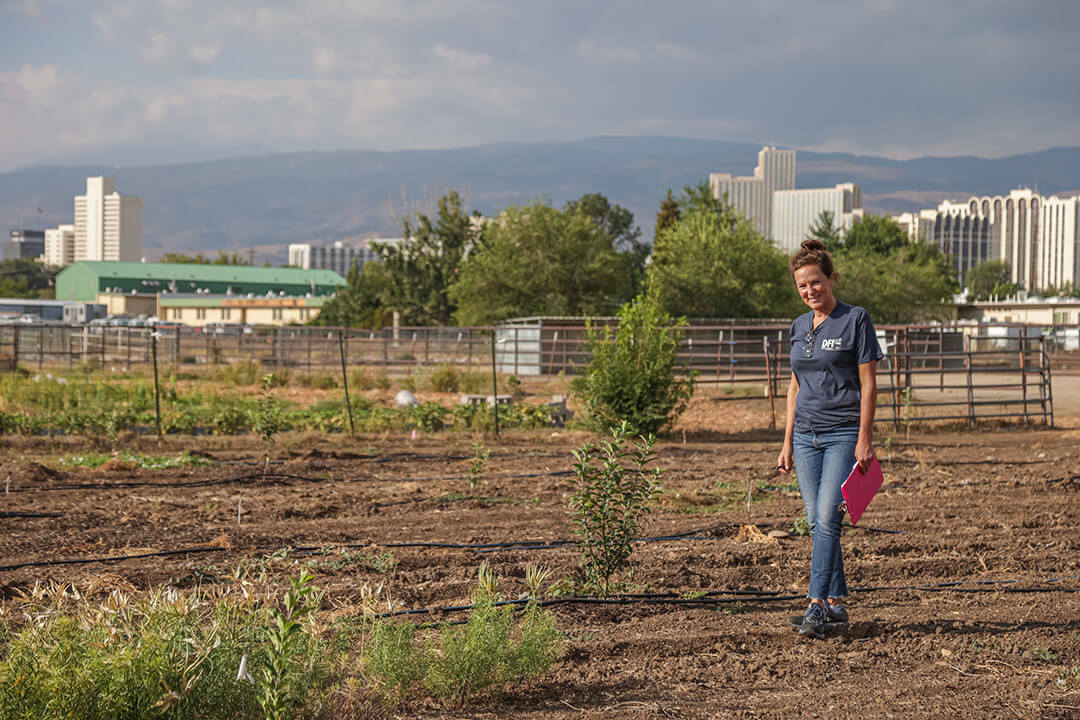A peek at UNR’s agriculture experiment stations.
In general, scientific experiments are long term, data heavy, and may result in some esoteric findings. However, some researchers conducting studies through the University of Nevada’s College of Agriculture, Biotechnology & Natural Resources’ Experiment Stations not only hope for results that can benefit the entire community, but have come up with some unexpected findings.
The experiment stations are the research arms of the CABNR. The stations are situated around The Silver State and offer the ability for researchers to do their experiments on a larger scale. Some experiments include studies on herbicide-resistant sorghum hybrids, desert irrigation testing, the feeding of brew waste to cattle to create “craft meat,” and alternative forage crops.
Memorial Orchard to Provide Student Food
One of the latest projects at the Valley Road Experiment Station in Reno and headed by the Desert Farming Initiative is the Jessica Younger Dickens Memorial Orchard. The orchard is named after Dickens, the chief of staff to Thomas Schwenk, M.D., the recently retired dean of the university’s School of Medicine.
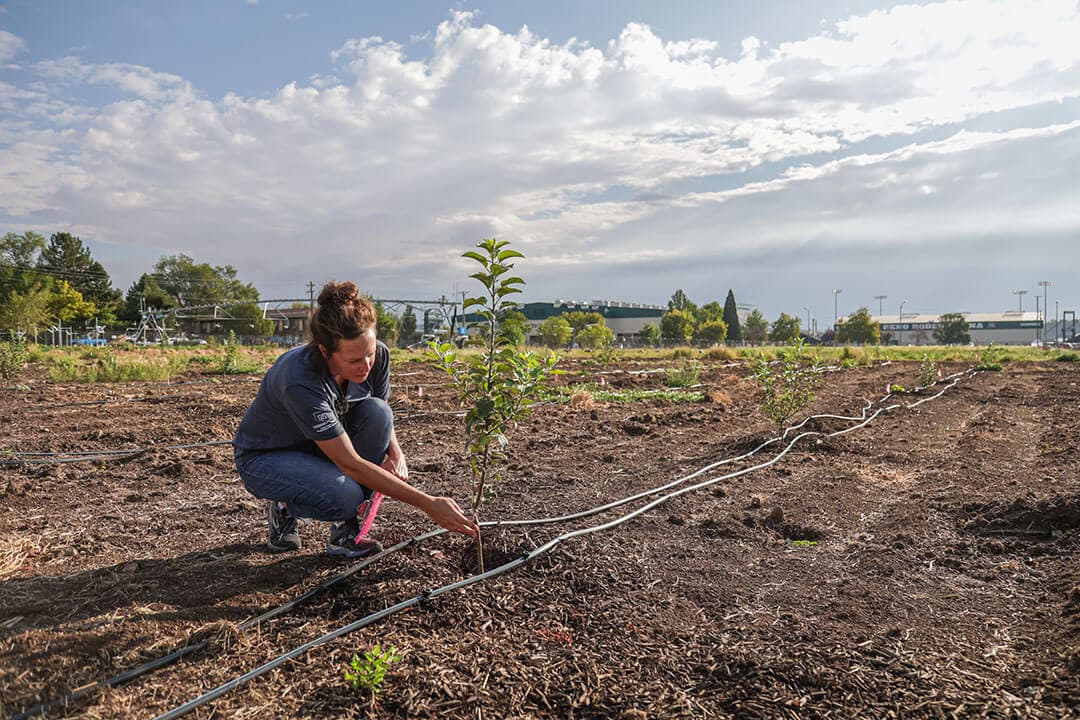
Planted by volunteers in spring of 2020, the half-acre orchard features 127 table and cider apple trees. Some of the cuttings, or scions, came from Dickens’ own trees. The 12 cider apple varieties were taken from antique orchards in Genoa, Mogul, and Washoe Valley. All the antique cuttings are an enigma.
“Many of these trees were planted before the Comstock by earlier settlers,” says William “Bill” Murphy-Sharp, co-owner of Tea House Gardens in Washoe Valley and emeritus faculty at the university. “What most people don’t know about apple trees is that they can produce fruit for about 300 years. These trees that we have, we don’t know what they are. The original owners are long gone, and the current owners don’t know what they have, but they like what they have.”
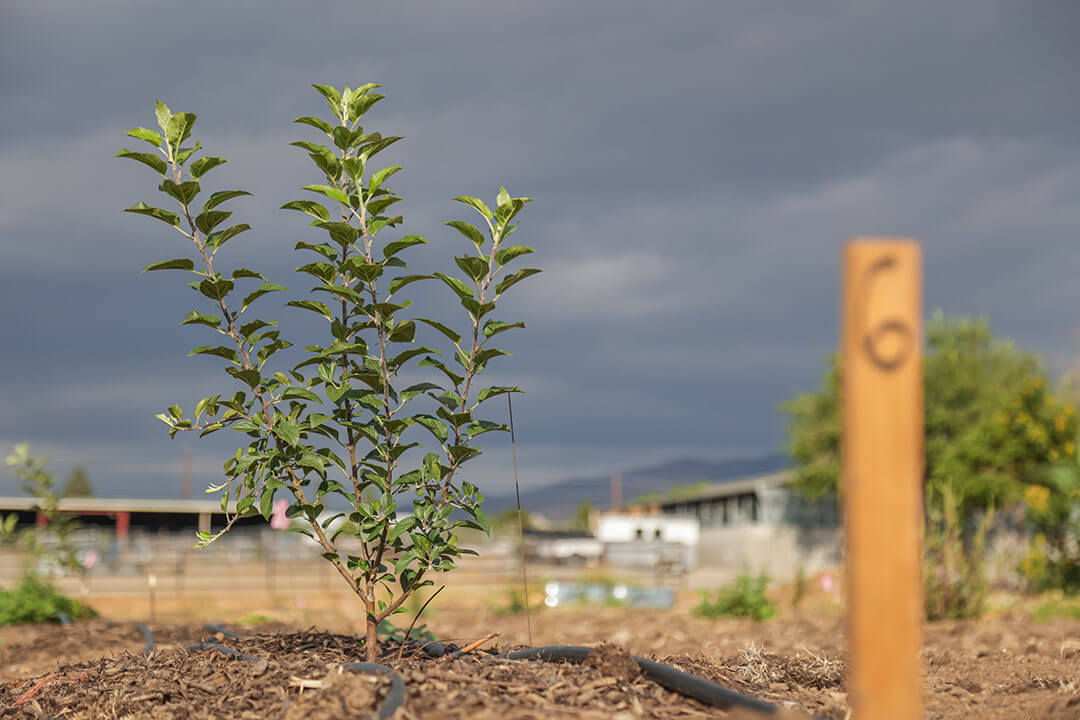
Murphy-Sharp is working with Assistant Professor Melinda Yerka, a geneticist with the Agriculture, Veterinary and Rangeland Sciences department. The duo also hopes to utilize the memorial orchard to study the types of apples, their flavor and crispness profiles, and how they have adapted to the Northern Nevada environment.
In the spring, Jill Moe, director of the Desert Farming Initiative, plans to formally commemorate the orchard with a plaque, an observation patio, and a perennial garden.
“The orchard really started with a conversation with Yanni Dickens (Jessica’s widower) because Jessica wanted to leave something behind that would provide food for campus and help people connect with where their food comes from,” Moe says. “A really cool aspect of it is that it could become a common orchard where other gardeners can come and take grafts, so it can become a source for these antique varieties across the West.”
When the trees mature, the fruit they produce will be given away to students through the university’s food pantry, Pack Provisions. According to a 2020 study by the Associated Students of the University of Nevada (ASUN), about one in four university students are food insecure. Pack Provisions works with the Desert Farming Initiative and other partners to provide fresh produce, food for pickup and delivery, and Mobile Mondays, a free monthly on-campus farmers’ market.
The DFI recently started a crowdfunding site to expand its winter production to deliver fresh produce year round.
“That’s really when our students are here, in the fall and spring,” says Amy Koeckes, associate director, ASUN Center for Student Engagement. “The ability for DFI to do that through the winter would really help our students.”
Cheatgrass Fall Grazing
Many of Nevada’s wildfires are fueled by a non-native grass called cheatgrass. One way cheatgrass can be reduced is by letting cattle and sheep graze on the grass within both rural and urban areas. Typically, in spring, livestock are allowed to graze on young cheatgrass, but a team from the CABNR is using laser scanners and drones to see if fall grazing will help control the invasive wildfire fuel even more.
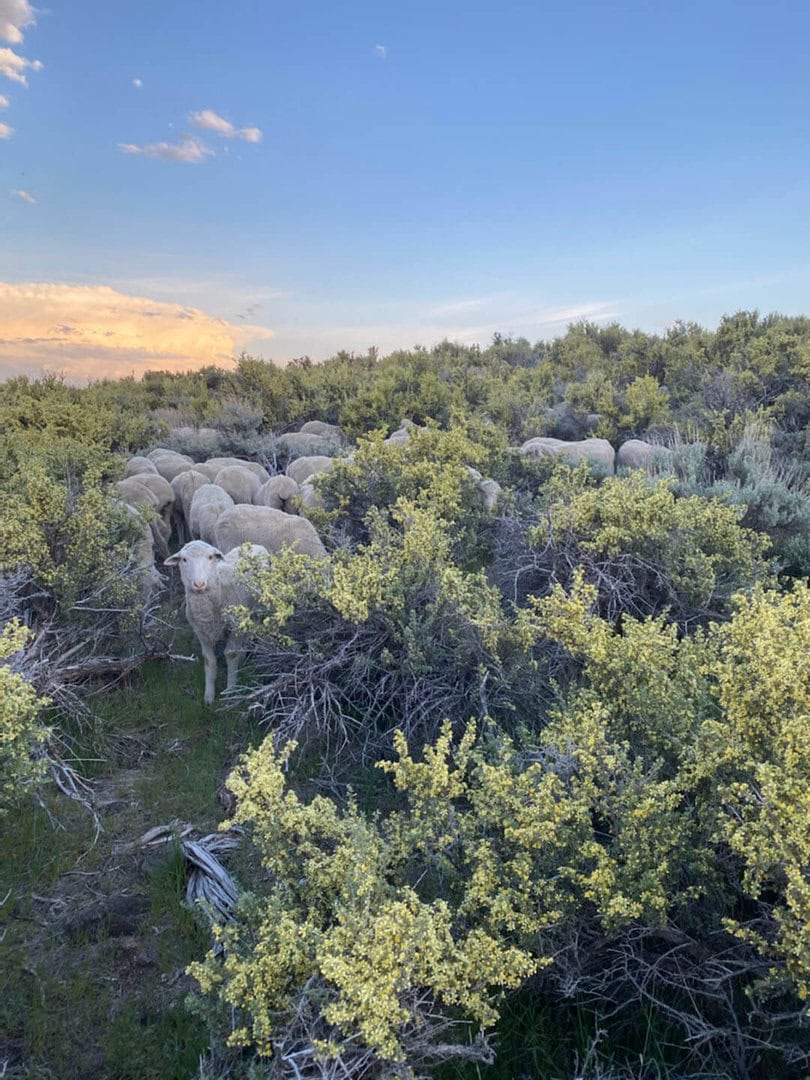
Funded by the U.S. Forest Service, the four-year project is being headed by Tracy Shane, animal and rangeland science lecturer and doctoral student at the college; Barry Perryman, professor and chair of the CABNR’s Department of Agriculture, Veterinary & Rangeland Sciences; Associate Professor Robert Washington-Allen; and Joseph Domer, rangeland ecologist and an alumnus of the college. Students and recent graduates also are being utilized in the field.
Since fall 2020, the team has been using both FARO Focus3D X 330 terrestrial laser scanners and DJI P4 Multispectral agricultural drones to gather both 3D images and aerial views of fall grazing areas in Jacks Valley near Carson City. The scientists are not only hoping to learn whether cheatgrass fuel loads can be reduced, but also whether native perennial grasses can become more dominant over time.
“We are seeing if we can have some positive impacts, not just on fuel loads, but on the plant communities as well,” Shane says.
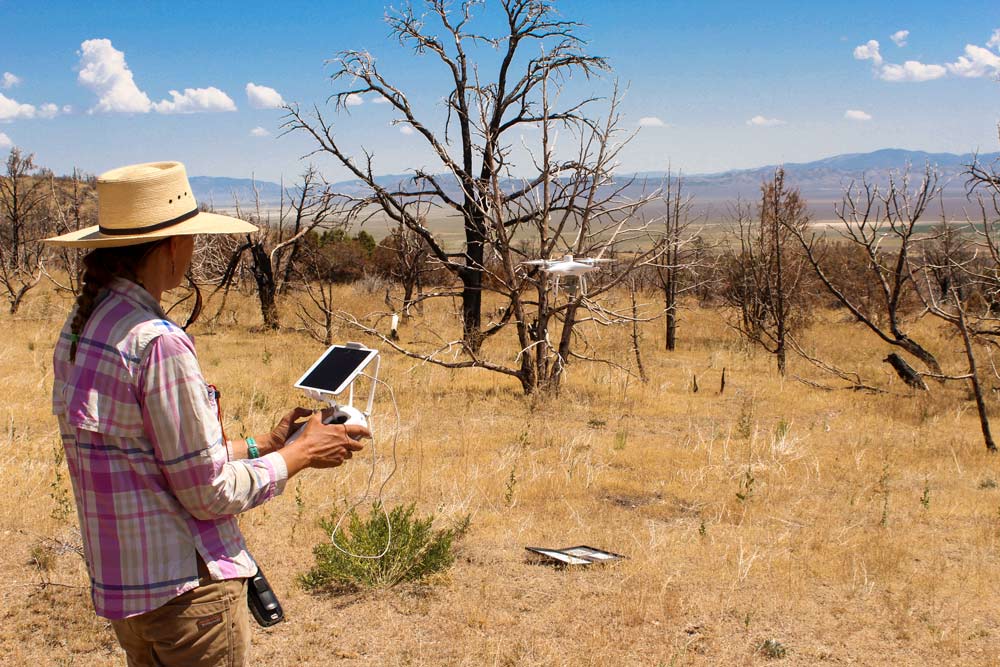
While the experiments are primarily focused on plant life, the animals and the ranchers are benefitting from the studies. One finding that was really important was that fall is breeding time for sheep; the team crossed its fingers that the grazing ewes would get pregnant just as easily in the field.
“It was a bit of a mystery if pregnancy rates would be as high as normally expected, and they were,” Shane says.
Shane also was surprised to find out that the sheep in the study crawled on their knees under desert peach shrubs to devour the fallen, desiccated peach fruits, in turn eating the cheatgrass under the bushes. She added that the study’s cattle also did well on the fall cheatgrass as soon as their spring and summer calves were weaned.
With these experiments on both the ground and up in the sky, the researchers working at these experiment stations will hopefully not only uncover new ways to use crops, feed livestock, and save water, but also share any findings with other universities, states, and even the world.
As a UNR alumnus, Christina Nellemann always is interested in what the experiment stations reveal in their studies.
Resources
UNR College of Agriculture, Biotechnology & Natural Resources
Unr.edu/cabnr
CABNR Experiment Station projects
Naes.unr.edu
